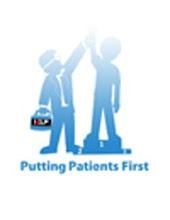Select books on preventing and managing back pain at 
BACK PAIN !
Quick Fixes for Everyday Back Pain: Tips, Tricks and Treatments to Help Stop the Pain
by Joan Suaers (Author), Peter Edwards (Contributor)
Read at HELP: See our online catalogue
Between 80 and 90 percent of us will experience back pain at least once in our lives—and despite advances in diagnostic techniques, treatment, and preventive regimens, this universal problem is not going away. Having suffered twenty years of chronic back pain until she found the right formula to maintain back health, co-author Joan Sauers writes from experience. Quick Fixes for Everyday Back Pain offers readers dozens of proven tips, tricks, and treatments that will help end their back pain and keep it from coming back. Packed with practical ideas and easy-to-understand illustrations and photos, this user-friendly guide helps readers choose the fixes that are right for them. Complete with down-to-earth explanations of the kinds and causes of pain, available drugs and treatments, and all the fun things we can do to keep the pain from coming back, Quick Fixes for Everyday Back Pain is an essential resource that readers will turn to again and again for strategies and advice.
|
The Back Pain Book
by Mike Hage (Author)
Read at HELP: See our online catalogue
A physical therapist tells how to relieve back and neck pain, of which 70 million Americans suffer. Your movement and posture may be the source - or the cure - for neck and low back pain. Mike Hage shows you how to analyze your patterns of standing, bending, breathing - even thinking. Learn to adjust these patterns in every move you make, from getting out of bed and choosing the right shoes to talking on the phone and getting to work. Take control of your pain and participate in your own rehabilitation by reprogramming your body to move correctly.
|
Your Aching Back: A Doctor's Guide to Relief
by Augustus White (Author)
Read at HELP: See our online catalogue
Three out of five adults will experience significant back pain at some point in their lives, making back pain America's number-one ailment.
At last, Dr. Augustus White, one of the world's leading specialists in back pain and spine-related problems, has revised and updated his trusted and authoritative manual. This definitive edition of Your Aching Back offers the latest findings on back ailments and their treatments, giving information on:
* basic back mechanics
* the most common reasons for backache and the most likely sufferers
* the most current diagnostic techniques
* basic back self-care: nonsurgical and preventive techniques; home treatments
* surgery: the most up-to-date technology and procedures
* postoperative care: recuperative techniques and life-style management
* controlling back pain in the elderly, including spinal stenosis and osteoporosis
* alleviating back trauma in sports and dance
* reducing lower back pain to increase sexual activity and enjoyment
This comprehensive manual also includes a glossary of terms, answers to the most commonly asked questions regarding back pain, and predictions on the future of back care. Over 70 black-and-white line drawings illustrate various back conditions and treatments, completing this indispensable book.
Written in a nonintimidating and reassuring tone, Your Aching Back is designed to help you take control of your back condition and get relief.
|
The Good Back Book: A Practical Guide to Alleviating & Preventing Back Pain
by Renita Fehrsen-Du Toit
Read at HELP: See our online catalogue
A decade ago, autism was a rare disease--today, most Americans know a family with an autistic child. Autism is now epidemic, currently affecting half a million American children, or 1 in 150. This makes it the most common developmental disability--more common than Down's syndrome, cerebral palsy, and mental retardation combined. Autism is growing at a startling rate of 10-17 percent per year, which means that the disease could reach several million Americans in the next decade.
Changing the Course of Autism has the potential to revolutionize the way this disease is perceived and managed by showing that autism can be treated as a medical disease, rather than a behavioral disorder. In this groundbreaking book, the authors explain that reducing neurological inflammation improves autistic behaviors dramatically, making a profound impact on the health and future of affected children and their families.
|



No comments:
Post a Comment